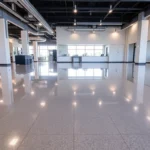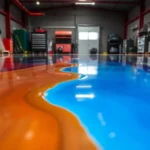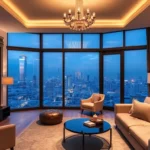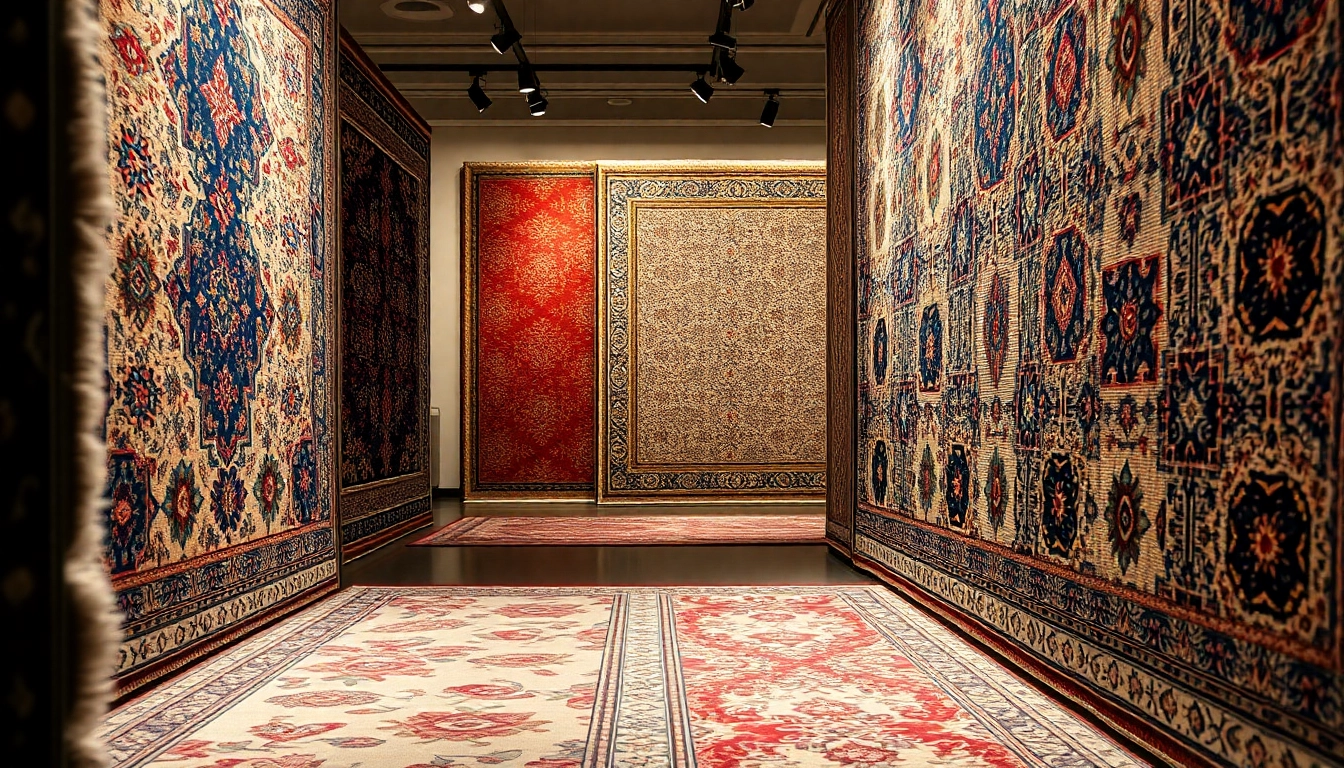Understanding the Tappeti a Milano Market Landscape
Historical Evolution of Rug Craftsmanship in Milano
Milano’s rich history of craftsmanship and design extends deeply into its tradition of rug making, dating back centuries. Historically, the city has been a crossroads of trade and cultural exchange, fostering a vibrant tapestry of influences from Persia, the Middle East, and Europe. Traditional techniques such as hand-knotting and weaving have been preserved and refined over generations, leading to a distinctive Milanese approach to rug craftsmanship that balances artistry with functionality. These historical roots have laid the foundation for the contemporary market, making Milano a hub for both antique and modern rugs that reflect a blend of heritage and innovation.
Significant milestones in Milano’s rug evolution include the arrival of Persian and Oriental traders, the establishment of ateliers during the Renaissance, and the subsequent influence of modern Italian design. As the city progressed into the 20th century, the integration of industrial techniques alongside traditional methods allowed for the production of high-quality, diverse rug collections. Today, Milan’s market continues to draw from this deep historical well, offering a broad spectrum of options—from timeless Persians to contemporary geometric designs—catering to the tastes of local residents, international clients, and designers worldwide.
Current Trends in Modern and Traditional Tappeti a Milano
The Milano rug scene is characterized by a dynamic interplay between tradition and innovation. On one hand, there is a resurging interest in preserving classic techniques—such as hand-knotted Persian and Caucasian rugs—that embody time-honored craftsmanship. On the other, modern trends emphasize minimalist designs, geometric forms, and bold color palettes that resonate with contemporary aesthetics. Notably, eco-conscious consumers are increasingly seeking sustainable materials and production methods, influencing the market towards organic wool, natural dyes, and eco-friendly processes.
Interior designers and homeowners in Milano are favoring versatile pieces that can serve as focal points or seamlessly blend into diverse styles. For instance, vintage kilims and tribal rugs are popular for adding texture and cultural depth to modern apartments, while sleek, abstract designs complement high-end commercial spaces. The trend towards customization also drives demand for bespoke rugs, where clients collaborate with artisans to create personalized pieces that reflect their unique tastes.
Technological integration, such as virtual reality showrooms and online customizations, is transforming how Milanese clients select rugs, making the process more accessible and immersive. This fusion of tradition and cutting-edge innovation ensures that the Tappeti a Milano market remains vibrant and adaptable to shifting design paradigms.
Key Factors Influencing Rug Selection in Milano Homes and Offices
Several critical elements influence how residents and businesses in Milano choose their rugs. The first is material quality. High-grade wool remains a favorite for its durability and softness, while silk adds luxury and finesse, especially in decorative pieces. Synthetic fibers are also prevalent due to their affordability and ease of maintenance, though they often lack the authenticity and longevity of natural materials.
The design style is another decisive factor. Classic Persian, Kilim, tribal, and Caucasian styles attract those seeking authenticity and heritage, whereas contemporary geometric and abstract designs appeal to those wanting modern elegance. Balancing aesthetics with functionality, such as slip resistance and ease of cleaning, also guides decisions—especially in high-traffic or commercial environments.
Size, shape, and color must harmonize with the intended space. Large rugs serve as room anchors in expansive living rooms or conference halls, while smaller pieces can define cozy corners or side tables. Color schemes should complement existing decor—neutral hues provide versatility, while vibrant tones inject energy into a room. Shape preferences vary from traditional rectangular to round or irregular forms, fitting various spatial layouts and design schemes.
Lastly, considerations around budget and maintenance influence purchasing choices. While bespoke, hand-knotted rugs command premium prices, their durability often offers better long-term value. Conversely, machine-made or synthetic rugs are more accessible but may require more frequent replacement.
Choosing the Perfect Tappeti a Milano for Your Space
Material Options: Wool, Silk, and Synthetic Fibers
Material selection significantly impacts both the aesthetic appeal and longevity of your rug. Wool remains a popular choice due to its natural resilience, softness, and insulating properties. It is also easier to maintain with proper cleaning. Silk, often used in luxurious pieces, provides a delicate sheen and intricate detailing, making it ideal for decorative or statement rugs in sophisticated settings. However, silk rugs are more fragile and require delicate handling.
Synthetic fibers, such as polypropylene, nylon, and polyester, offer affordability and stain resistance, making them suitable for high-traffic areas like offices and children’s rooms. Although these materials are less authentic, technological advances have improved their appearance, making them increasingly close in feel and design to natural fibers.
When choosing the right material for a specific environment, consider factors such as traffic level, aesthetic preferences, and maintenance capabilities. For example, a high-traffic corridor might benefit from a durable wool or synthetic rug, while a formal living room might better showcase an elegant silk piece.
Design Styles: Persian, Kilim, Contemporary Geometric
The diversity of design styles available in Milano’s market allows for tailored selections aligned with personal taste and interior decor. Persian rugs, renowned for their intricate patterns and rich history, exude timeless elegance and are often centerpiece collectibles. Kilims, characterized by flat-weaving and bold geometric motifs, are versatile and excellent for adding texture and vibrant accents.
Contemporary geometric rugs emphasize abstract patterns, often in monochromatic or bold color schemes, fitting seamlessly into modern and minimalist interiors. These styles cater to those seeking a balance between functionality and artistic expression. Moreover, there is a growing trend toward hybrid designs that blend traditional craftsmanship with contemporary aesthetics, offering the best of both worlds.
The choice among these depends on the atmosphere you wish to create. For classic sophistication, Persian and antique-inspired rugs are ideal, while Kilims and modern geometries are perfect for trendy urban spaces.
Size, Shape, and Color Considerations for Different Rooms
Proper sizing and shape are crucial for achieving visual harmony. In spacious living rooms, large rectangular or oval rugs anchor furniture arrangements and create cozy zones. Small to medium-sized rugs suit bedrooms or reading nooks, providing warmth and defining spaces.
Round rugs are increasingly popular for adding softness and visual interest, especially under coffee tables or in entryways. Conversely, irregular or abstract-shaped rugs are preferred in eclectic or contemporary settings to add a dynamic element.
Color selection should reflect the room’s palette and desired mood. Neutral tones—beige, cream, taupe—offer flexibility and elegance, while vibrant reds, blues, or greens add energy and focal points. Monochrome or subtle color schemes work well in minimalist environments, whereas contrasting hues can energize larger spaces.
Expert Tips for Buying and Maintaining Tappeti a Milano
Where to Buy Authentic Milano-Based Rugs: Shops and Online Outlets
To ensure authenticity and quality, it is vital to purchase from reputable sources. In Milano, well-established showrooms such as Artorient Milano and specialized ateliers like Cohen Tappeti offer curated collections of traditional and modern rugs. These stores typically provide detailed provenance, craftsmanship insights, and personalized service. Online outlets like Tappeti a Milano also present extensive selections with expert guidance and convenient delivery options.
When selecting a vendor, verify their credentials, reviews, and the provenance of their rugs. Visiting physical showrooms allows for tactile assessment and direct consultation with artisans and experts, ensuring a better investment.
How to Care for and Restore Your Tappeti a Milano Over Time
Proper maintenance prolongs the lifespan and preserves the beauty of your rug. Regular vacuuming prevents dust accumulation and prevents fiber damage, while immediate attention to spills—blotting with a clean cloth—is crucial to avoid staining. Professional cleaning at least once every 1-3 years is recommended, especially for antique and high-value pieces.
Restoration involves gentle re-weaving, repairing fringe damage, or re-dyeing faded areas. Selecting specialists with proven expertise in traditional and modern techniques is essential. Preventative measures such as avoiding direct sunlight, rotating rugs periodically, and using underlays to prevent slipping further enhance longevity.
Cost Considerations and Value for Investment in Quality Rugs
High-quality Tappeti a Milano span a broad price range, influenced by factors such as material, size, age, and craftsmanship intensity. Hand-knotted Persian and antique rugs often represent significant investments but tend to appreciate over time, making them valuable assets.
Conversely, machine-made or synthetic rugs are more budget-friendly but may lack the durability and exclusivity of artisan pieces. Prioritizing your intended use, aesthetic preferences, and long-term goals will help determine the best investment balance.
Experts recommend viewing a high-quality rug not as an expense but as a long-term asset enriching your space’s style and value.
Top Destinations and Showrooms for Tappeti a Milano
Premier Stores and Ateliers in Milano with Exclusive Collections
Milano boasts numerous distinguished showrooms, including Artorient Milano, Cohen Tappeti, and Zal Tappeti Milano, each offering curated selections of premium rugs. These locations often feature dedicated ateliers for custom designs, restoration, and expert consultation. Visiting these spaces allows clients to view authentic pieces up close and receive personalized assistance tailored to their interior vision.
Many of these stores also host exhibitions and special events, creating opportunities to explore the cultural history and craftsmanship behind each rug.
Services Offered: Customization, Restoration, and Cleaning
Leading Milanese rug showrooms not only sell but also offer comprehensive services. Customization allows clients to select patterns, colors, and sizes, ensuring their piece aligns perfectly with their environment. Restoration and repair services help maintain and revive antique or heirloom rugs, preserving their historical and monetary value.
Additionally, professional cleaning, using eco-friendly approaches like water-based and hand-wash techniques, ensures the longevity of your investment while safeguarding delicate fibers.
Customer Testimonials and Success Stories Across Milano
Satisfaction among clients highlights Milano’s reputation as a global hub for fine rugs. Many customers share stories of transforming their spaces with authentic pieces, emphasizing the quality, craftsmanship, and personalized service received. For example, prominent interior designers frequently collaborate with Milanese stores, reflecting the high demand for bespoke, high-end Tappeti a Milano.
Future Outlook and Innovations in the Milano Rug Market
Emerging Design Trends in Tappeti a Milano
The Milano market continues to evolve with innovative design directions. Minimalist, abstract, and eco-inspired motifs are gaining prominence, reflecting broader societal shifts towards sustainability and simplicity. Collaborations between artisans and contemporary designers are producing hybrid pieces that combine traditional craftsmanship with cutting-edge aesthetics.
Integration of Sustainable and Eco-Friendly Materials
As environmental concerns grow, Milanese rug producers increasingly adopt eco-friendly materials, such as organic wool, natural dyes, and biodegradable fibers. These efforts reduce ecological impact and appeal to eco-conscious consumers seeking authentic, sustainable luxury.
Digital Technologies Transforming the Shopping Experience
The advent of digital tools enables clients to explore collections virtually, customize designs online, and visualize rugs within their spaces through augmented reality apps. Virtual consultations and online marketplaces make high-end Milano rug offerings accessible globally, expanding the city’s influence as an internationally recognized center for fine carpets.









